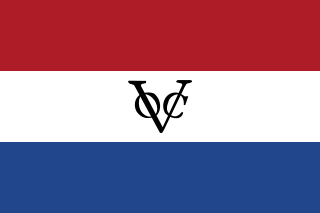This page is based on this
Wikipedia article Text is available under the
CC BY-SA 4.0 license; additional terms may apply.
Images, videos and audio are available under their respective licenses.
The following lists events that happened during the 1730s in South Africa.
The following lists events that happened during the 1660s in South Africa.
The following lists events that happened during the 1690s in South Africa.

Simon's Town, sometimes spelled Simonstown, is a town which is administratively a South Peninsula suburb of Cape Town, and is home to the South African Navy's Naval Base. It is located on the shores of False Bay, on the eastern side of the Cape Peninsula. For more than two centuries it has been a naval base and harbour. The town is named after Simon van der Stel, an early governor of the Cape Colony.

Hendrik Adriaan van Rheede tot Drakenstein was a military man and a colonial administrator of the Dutch East India Company and naturalist. Between 1669 and 1676 he served as a governor of Dutch Malabar and employed twenty-five people on his book Hortus Malabaricus, describing 740 plants in the region. As Lord of Mydrecht, he also played a role in the governance of the Cape colonies. Many plants such as the vine Entada rheedii are named for him.

Vergelegen is a historic wine estate in Somerset West, in the Western Cape province of South Africa.

Groot Constantia is the oldest wine estate in South Africa and provincial heritage site in the suburb of Constantia in Cape Town, South Africa.
Cornelius Gooyer was a Dutchman who established a settlement in Mauritius. He served as the island's governor from 1639 to 1640. He was succeeded by Adriaan van der Stel.
Adam Tas was a community leader in the Cape Colony at the turn of the 17th century, and is best known for his role in the conflict between Cape Governor Willem Adriaan van der Stel and the "free burghers" at the Cape of Good Hope.

Willem Adriaan van der Stel was appointed as extraordinary Council of the Dutch Indies, and Governor of the Cape Colony, a way station for the Dutch East India Company (VOC), from 23 January 1699 to 1707. He was dismissed after a revolt and was exiled to the Netherlands.
François de Haze worked for Dutch East India Company as an opperhoofd on Deshima (1669–1670), in Persia (1671–1673) and Bengal (1673–1676).

Mauritius was an official settlement of the Dutch East India Company on the island of Mauritius between 1638 and 1710, and used a refreshing station for passing ships. It was already frequented by Dutch ships from 1598 onwards, but only settled in 1638, to prevent the French and the British from settling on the island.

Isaac de l'Ostal de Saint-Martin was a French chevalier, who came in an unknown year from the Béarn to the Dutch Republic.

The Groote Kerk is a Dutch Reformed church in Cape Town, South Africa. The church is South Africa's oldest place of Christian worship, built by Herman Schuette in 1841. The first church on this land was built in 1678. Willem Adriaan van der Stel laid the cornerstone for the church. It was replaced by the present building in 1841, but the original tower was retained. The pulpit is the work of Anton Anreith and the carpenter Jacob Graaff, and was inaugurated on 29 November 1789. The Groote Kerk lays claim to housing South Africa's largest organ, which was installed in 1954 and has 5917 pipes.
Coetsenburg is an historic wine estate and one of the oldest estates in South Africa, established in 1682, and located at the foot of the Stellenbosch Mountain, which forms part of the estate, in the town of Stellenbosch, 31 miles (50 km) east of Cape Town, in the Cape Winelands of the Western Cape Province. The estate has historically been owned by the Coetsee family and is currently not open to the public. The north-western portion of the original estate is now the Coetsenburg Sports Grounds which belongs to the University of Stellenbosch.
Dirk Coetsee was the Hoofdheemraad (Chancellor) of the District of Stellenbosch and Drakenstein in South Africa for most of the 1690s and early 1700s. He also served as captain of the Stellenbosch Infantry and deacon of the Stellenbosch Moederkerk at different points in time. As captain of the Stellenbosch Infantry, which comprised mostly Huguenots, he provided military backing for a rebellion which began in 1706 against the Governor of the Cape Colony, Willem Adriaan van der Stel, whom the vrijburghers had accused of tyranny, corruption and racketeering. Coetsee was imprisoned in the dungeon of the Castle of Good Hope along with the other leaders of the Huguenots but he was released after a year. The rebellion ultimately succeeded in 1707 when the Dutch East India Company recalled the Governor and other colonial officials. An account of the rebellion is vividly described in the "Diary of Adam Tas".

Stellenberg is a suburb in Bellville, Western Cape South Africa.









